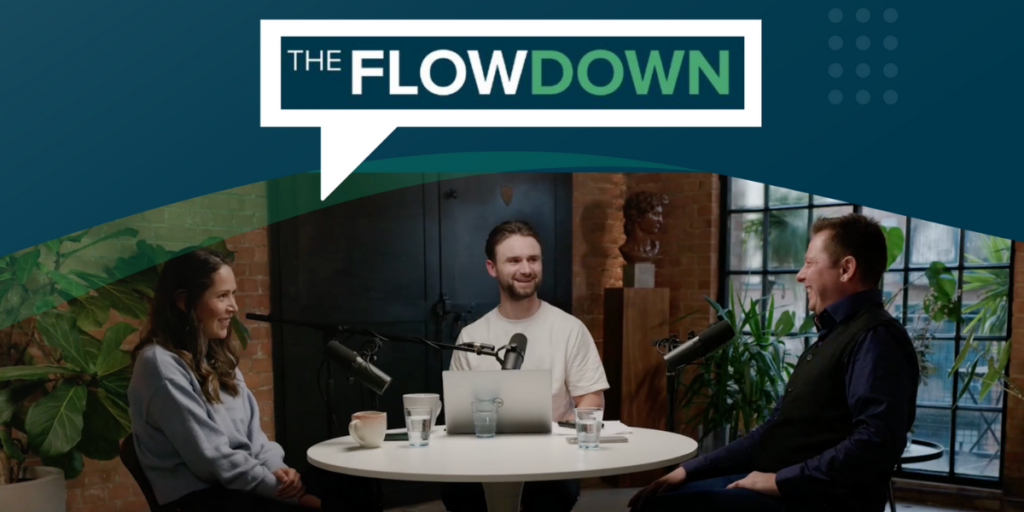ServiceNow’s Dr Raj Iyer tells all on public sector passions, challenges and what cloud technology can do for governments and citizens now.
Having dedicated his career to improving technology in the public sector and how much governments can do for their citizens and employees, Dr Raj Iyer, global head of public sector at ServiceNow sat down with us to discuss the most pressing issues the public sector is facing today, and what more can be done with the technological advancements available.
Yoana Cholteeva (YC): When did you discover your passion for technology and transformation in the public sector?
Dr Raj Iyer (RI): I think the first time I got engaged was when I joined the United States Army as a civilian right after 9/11. That was my first real-time exposure to working for the federal government as a civilian employee in the United States. And I did that just out of pure patriotism. I was also looking at how the government was lagging behind [in] technology and the role that I could actually play in trying to advance some of that. So since then, I have always had some form of public sector exposure, whether I’ve worked in the government or worked in consulting outside of government.
YC: What drives your work and inspires you to innovate in your current role at ServiceNow?
The digital divide has just gotten worse, right? As consumers, the experience is very different
from the one we get from government services as citizens
RI: The digital divide has just gotten worse, right? As consumers, the experience is very different from the one we get from government services as citizens. And so we need to close that digital divide. Then the workforce that’s entering the job market today, their expectations of technology are very different, they are mostly digital natives now, and we didn’t have that even five, seven years ago.
The current workforce pretty much all grew up with an iPhone or a smartphone in their hand. So either as a US citizen or as an employee, the expectation is being serviced by the government, with real-time data, greater transparency in terms of where your service request is, and being able to do this instantaneously. I think that’s where governments have the opportunity to transform their citizens’ services in ways that maybe weren’t prioritized before.
YC: How much can the public sector benefit from cloud based digital technologies?
RI: I think cloud has enabled governments to reduce their costs. It is much more expensive to sustain an on-premise infrastructure than to go buy capacity on demand to do these things, since you pay for what you use, right? You’re not buying fixed capacity and sitting on it. With cloud, it’s pay-as-you-go. I know that the UK Government has a mandate for departments to reduce their expenditures by 10-20 percent. So, cloud and this transition to the new way of doing things can get us there while emphasizing things like user experience at the same time. It’s a win-win.
YC: What’s the role of The Now Platform for digital transformation in the public sector?
If you look at the complexity of all the IT infrastructure that governments run, very rarely are they able to cater to citizen services because most of these systems, including ERPs, are built to run back office operations.
RI: When we look at what governments do, they essentially serve as a request from citizens. At a very simplistic level, a citizen’s request for something could be a tax service, it could be a social service, it could be a health service. And yet, if you look at the complexity of all the IT infrastructure that governments run, very rarely are they able to cater to citizen services because most of these systems, including ERPs, are built to run back office operations – HR systems are meant for HR professionals, ERP systems for budgeting and finance, accounting or logistics personnel. They don’t really translate well to citizen-facing services.
What ServiceNow does well is that it serves as that layer of engagement for citizens, so that whatever your request might be you have that kind of single point of entry, a single front door to be able to request services. What ServiceNow does to our workflows is to then tie back into all of this legacy infrastructure, including ERPs, to integrate data and services and then service the citizens through that new modern user experience, which is one of the key reasons why governments are going digital.
YC: What are the most disruptive challenges that stand in the way of improving public sector work?
RI: When you look at the legacy IT systems that governments run, they’re not secure.
I think governments have put on a lot of band-aid fixes. But bad actors are getting a lot more sophisticated and can penetrate through all of the firewalls and security parameters in place. And again, this is one of the value propositions for the cloud, that it is inherently a lot more secure than any of the on-premise data centers that governments run.
Not just governments, but a lot of other regulated industries, like financial services, banking, insurance and healthcare use our software-as-a-service platform, over 85 percent of the Fortune 500 companies. They have the same security requirements that governments do and they’re worried about citizen data just as much as governments. So, we have built-in and baked security into our architecture and it’s treated as a very, very critical requirement in every phase of our development process.
YC: ServiceNow is doing extensive work with the NHS in the UK. Which are the main areas of collaboration?
We’ve shown how, when you have software-as-a-service, you can build workflows rapidly in response to crisis […] and have them running in days and weeks instead of months and years.
RI: The work we’re doing with NHS Digital is focused on making the IT operations of the NHS a lot more efficient because I know the NHS has a lot of challenges right now and it’s very public. It will take some time for NHS to come through. But an area of immediate focus for us has been how to make the IP operations a lot more effective and efficient, so working with NHS Digital, we’ve been able to solve some of those challenges.
We also worked with NHS Scotland during the Covid pandemic in coming up with a vaccine management system, which was critical in terms of making sure that Scotland was able to keep track of the vaccine records. And that was turned on in a record time during the pandemic. Again, it shows an example of how with a digital platform and cloud you can build these workflows and have them running in days and weeks instead of months and years.
So we’ve shown how, when you have software-as-a-service, you can build workflows rapidly in response to crisis and that has been a great success story.
YC: What do you see as the main public sector areas that require the most optimization and transformation? What would your work be focusing on in the near future?
RI: I think a lot of the governments are focused on migrating to the cloud, but the areas we’re focused on are not just taking your existing legacy apps and migrating them to the cloud.
We’re working with a lot of our customers doing an app rationalization and understanding what their requirements are. Our assessment has shown that about half of the apps can just be rebuilt rapidly in the ServiceNow platform without even having to migrate to the cloud. But again, that means we need our government customers to truly understand the value of the platform and have a strategy in place.
The other area is around how we help governments modernize their services for the future, things like climate change, as governments are moving into more mandates around electric vehicles and green energy, how can the ServiceNow platform be that engine for modernization in that space?
YC: What challenges exist for the public sector in the UK and US in making a digital shift?
RI: One of the biggest is the importance of upskilling and rescaling the workforce as part of a transformation. Because if organizations don’t do that, then the risk is that they are just going to outsource it to contractors in the private industry as they’ve always done in the past. And that’s not the transformation that’s needed in this space so workforce transformation is key.
We’ve made a commitment through our RiseUp program to upskill a million people worldwide when it comes to digital transformation. And we have shown that through the ServiceNow platform, you can have a non-technical person come in, learn about the platform and they can be building apps in literally weeks, so there is this opportunity to build capacity for large-scale transformation.
YC: What is the global ServiceNow view for AI in the public sector?
RI: There’s got to be a balance between ethical AI and making sure that AI helps decision-making, but it’s not the eventual decision-maker – there’s a nuanced difference there. Having said that, AI has the opportunity to help automate a lot of business rules that are already in place. That’s an area where we’re focused on in the platform, where there are clear eligibility rules, business rules and policies defined.
However, clearly over the decade, I think what we’re gonna see is AI take a lot more of the things that can be automated. Then, especially given the workforce challenges that have to happen, there’s just no reason to continue having things so manual.
In terms of what we’re seeing already with chatbots, for example, just look at that technology from five years ago. Would you have ever tried to interact with them? No, because we never trusted them, right? We thought: “I better just call somebody.” It was easier to do that. I think when you look at it today, I would say personally, I do more than 50 percent of my interaction with chatbots. That’s because it has matured. There’s been more knowledge built into it and generative AI. I think we’re going to start seeing even more meaningful engagements through chatbots. So, those are some of the areas where I think we’ll see more AI in the future.




